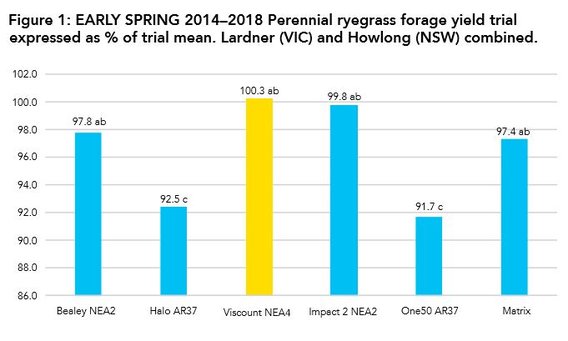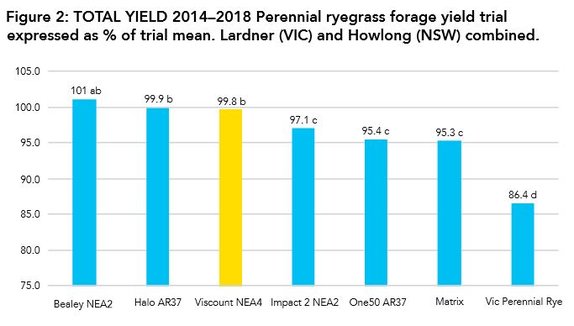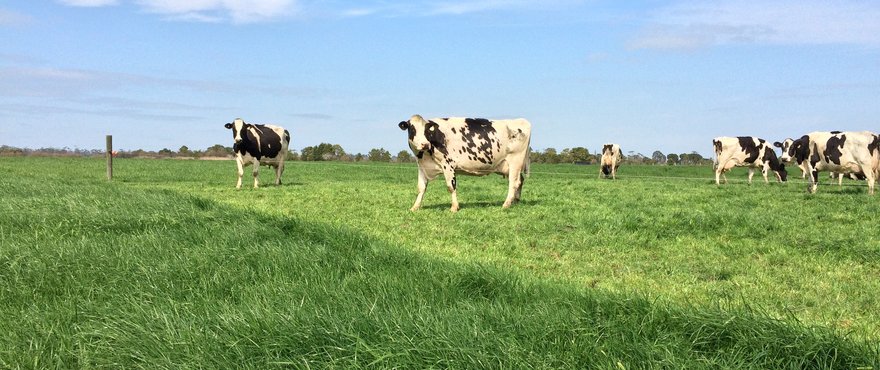Download a copy of the Viscount perennial ryegrass factsheet.
Viscount NEA4 is a new and improved late-flowering tetraploid perennial ryegrass for high-input pasture systems. Viscount offer superior total yield and also gets growing faster out of winter for valuable feed in early spring.
Key features
- Tetraploid perennial ryegrass
- Late flowering (+19 days)
- Rapid establishment with very-high total pasture yield
- Superior early spring production
- NEA4 endophyte for insect resistance and better pasture longevity
Key benefits
- Exceptional total pasture production with the combination of total yield and NEA4 endophyte for improved persistence
- Fast-forward out of winter and into spring faster with superior early spring-production compared with its peers
- Highly palatable tetraploid ryegrass, with ruminant-friendly NEA4 endophyte for both animal performance and improved insect resistance
Agronomy and management
Sowing rate: For best results sow Viscount at 20 – 30 kg/ha into a clean, weed-free seed-bed with adequate soil fertility.
Sowing depth: Ryegrass can be sown at 5– 20 mm, however if sowing in a mix with clover, try to keep the sowing depth from 5–10mm.
Fertiliser: For best performance, soil fertility and acidity problems should be addressed prior to sowing. It is usually best to plant ryegrass with 60 – 100 kg/ha of MAP or DAP at sowing to provide some starter phosphorus and nitrogen.
Weeds: Ideally, reducing the weed burden of a paddock should commence in the season prior to sowing by reducing the seed-set of annual weeds with either a herbicide control or silage. Additionally a knock-down herbicide (such as Glysophate) is best applied prior to sowing if weeds are present.
Grazing: Ensure the first grazing doesn’t take place until the plants are sufficiently anchored. Use your hand to pull on the plants at grazing height, if the plants remain in the ground, then grazing can commence. Ideally, ryegrass should be rotationally grazed for optimal growth. To do this, graze at the 2.5 – 3 leaf stage, then let the plants rest again to the 2.5 – 3 leaf stage to re-charge the carbohydrates levels to enable better growth rates.
Performance


Plant Breeders Rights (PBR): This variety is registered under Plant Breeders Rights (PBR) in Australia. Unauthorised commercial propagation or any sale, conditioning, export, import or stocking of propagating material is an infringement under the Plant Breeders Rights Act (1994). Any breach of this legislation will leave the grower liable for prosecution.
Disclaimer: The information presented in this brochure is from official and other sources and is considered to be reliable. It is provided in good faith and every care has been taken to ensure its accuracy. Barenbrug does not accept any responsibility for the consequences that may arise from the acceptance of recommendations or the suggestions made.


